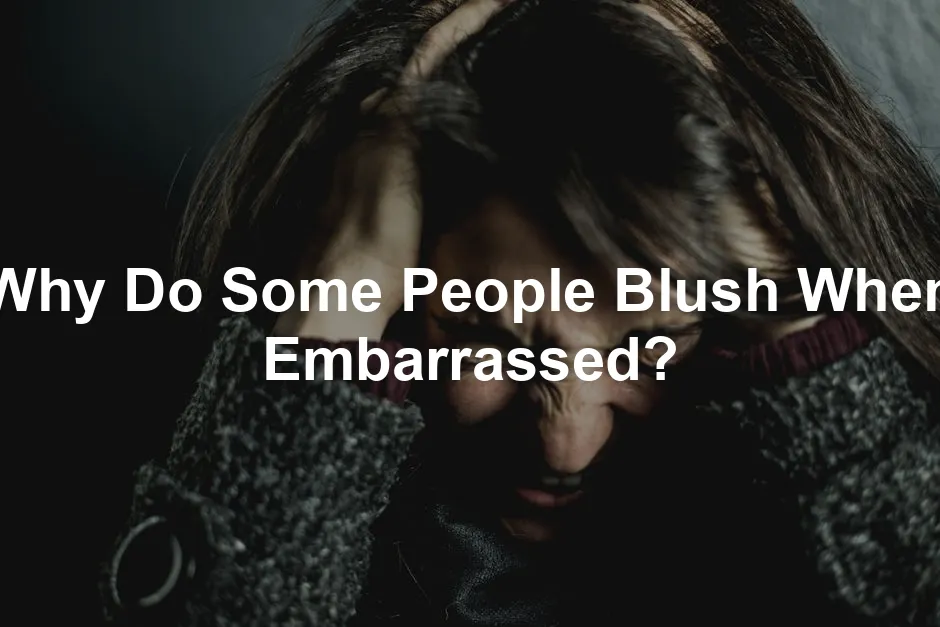
Why Do Some People Blush When Embarrassed?
Introduction
Blushing is that quintessential human experience where your face turns a shade of crimson, often catching you completely off guard. This involuntary reaction is as common as a sneeze, yet it remains shrouded in mystery. Nearly everyone has blushed at some point, whether in response to a compliment, an awkward moment, or sheer embarrassment. This peculiar phenomenon isn’t just skin deep; it’s a fascinating interplay of psychology and physiology.
When embarrassment strikes, the body reacts in unexpected ways. You might feel a rush of heat, your heart races, and before you know it, your cheeks are glowing like a stoplight. But what exactly triggers this reaction? The answer lies in the complex neurochemical processes that govern our emotional responses. This article aims to peel back the layers of blushing, exploring the reasons behind this blush-inducing phenomenon, its social implications, and various techniques to manage it.
While we’re at it, if you’re looking for some insightful reading to help you understand human behavior better, check out The Social Animal by David Brooks. It dives deep into the intricacies of human interactions and might just help you decode those blush-inducing moments!

The Physiology of Blushing
What Happens in the Body?
When you feel embarrassed, your body releases adrenaline. This surge of adrenaline is like a mini-fire alarm, signaling the sympathetic nervous system to kick into action. As a result, blood vessels in your face dilate, allowing more blood to flow. This process not only warms your cheeks but also transforms them into a radiant red hue.
But why does this happen? Blushing is part of our “fight-or-flight” response. Although embarrassment isn’t a life-threatening situation, the body reacts as if it were. This response can often feel overwhelming, especially if you find yourself at the center of attention or in an awkward social situation. The intensity of blushing varies from person to person, influenced by factors such as personality and social anxiety.
If you’re looking for a way to calm those nerves, consider grabbing a Stress Relief Fidget Spinner. It’s a great tool to channel that nervous energy and keep your hands busy, giving your mind a moment to relax.

Why the Face?
Facial veins are particularly sensitive to dilation compared to other areas of the body. The anatomical structure of facial blood vessels allows them to respond quickly to emotional stimuli. Research shows that facial blood vessels are wider and closer to the skin’s surface. This unique setup means they can easily become engorged with blood during emotional episodes, leading to that telltale blush.
Studies have demonstrated that people are more likely to forgive someone who blushes in embarrassment. This reaction could be because blushing signals a genuine emotional response, indicating the person feels remorse or shame. So, the next time you notice someone turning red, remember: they might just be wearing their heart on their sleeve—or, in this case, their emotions on their cheeks!
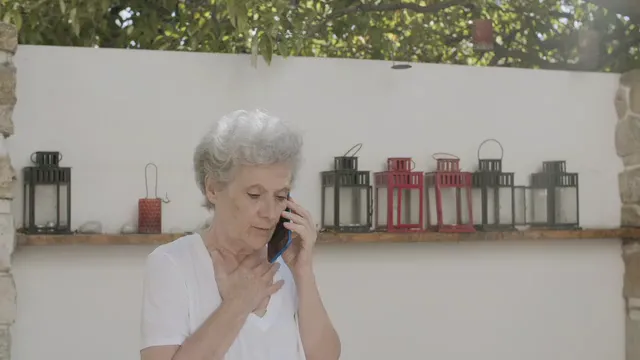
The Psychology Behind Blushing
Emotional Triggers
Blushing can feel like that infamous spotlight, shining directly on you at the most awkward moments. But what triggers this crimson tide? Common emotional triggers include embarrassment, shame, and self-consciousness. Imagine being caught in a faux pas, like tripping over your own feet or dropping your phone mid-conversation. Your cheeks heat up faster than a microwave, showcasing your discomfort to everyone around you.
Social situations often amplify these feelings. Public speaking? Check. Receiving a compliment? Double-check. Even a casual “I like your shoes” can send some into a frenzy of blushing. It’s as if these situations flip a switch, activating our sympathetic nervous system, which speeds up blood flow to the face, causing that telltale flush.
Interestingly, research suggests that our awareness of these events can fuel the blushing cycle. The more we worry about blushing, the more likely we are to blush—it’s a bit of a cheeky paradox! So, next time you feel that warm rush, remember: it’s not just you; it’s a universal human reaction.
If you find that social anxiety is a recurring theme in your life, you might want to check out Self-Help Books for Social Anxiety. These resources can provide valuable insights and coping strategies to help you navigate those blush-inducing moments with more confidence.
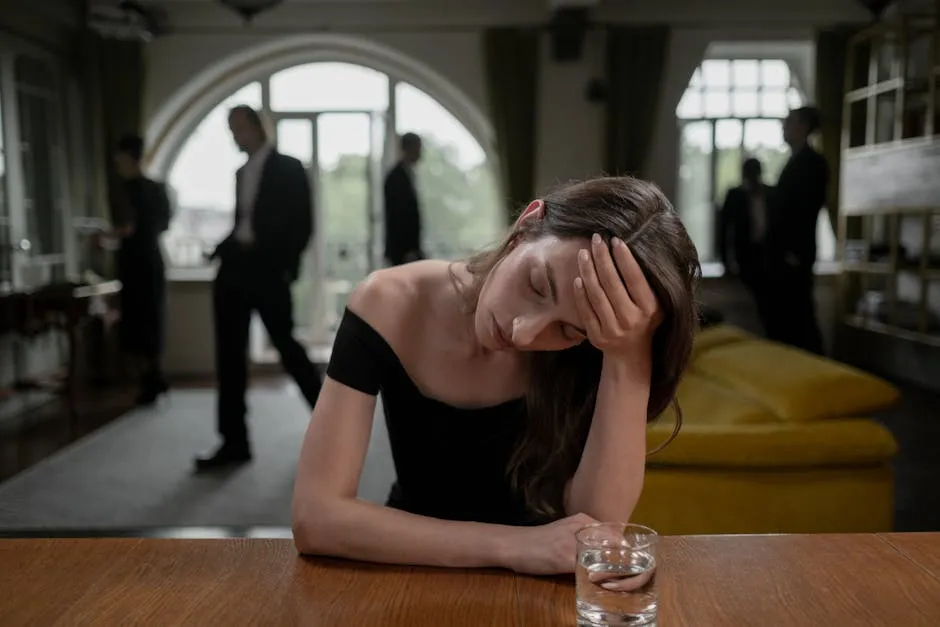
The Social Function of Blushing
Blushing isn’t just a personal embarrassment badge; it has social significance too. Some theories suggest that blushing acts as a social signal. When you turn red, it conveys sincerity and remorse. It’s like saying, “Oops, I messed up!” without uttering a word. This involuntary response may foster forgiveness from others, making it easier to diffuse social tensions.
Think about it: when someone blushes, it can induce empathy in onlookers. They recognize the struggle and might be less likely to judge harshly. This reaction can promote social bonding and understanding. Blushing might even serve as a non-verbal apology, reinforcing social rules. It essentially tells others, “I didn’t mean to disrupt our harmony.”
Moreover, blushing can enhance perceived likability. Research indicates that those who blush are often viewed as more trustworthy. So, if you find yourself turning beet red, take heart! You’re not just showcasing embarrassment; you’re also sending signals of authenticity and vulnerability, potentially winning social favor in the process.
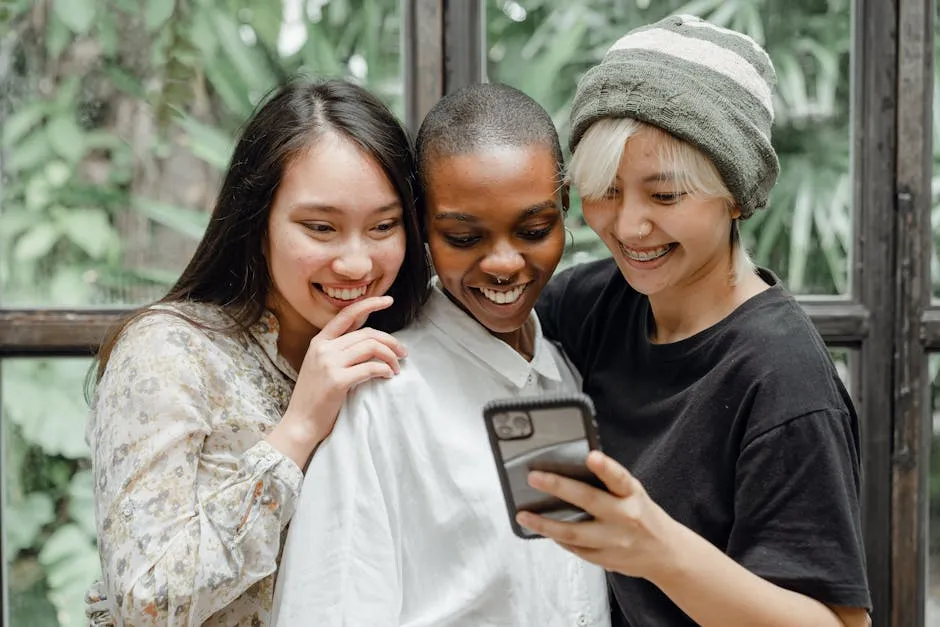
Variations in Blushing Sensitivity
Individual Differences
Now, blushing isn’t a one-size-fits-all experience. Some people blush like chameleons, while others remain as cool as cucumbers. Individual differences play a significant role. Why do some folks turn crimson at the slightest remark, while others are practically immune? Personality traits, like social anxiety, are key factors.
Socially anxious individuals often blush more easily. The fear of judgment can heighten self-consciousness, leading to frequent blushing episodes. It’s a classic case of the body’s fight-or-flight response—only, in this scenario, the threat is social rather than physical.
Interestingly, there’s also a phenomenon known as erythrophobia, the fear of blushing. This can create a vicious cycle, where the anxiety of possibly blushing leads to actual blushing. It’s as if your body is playing a cruel joke on you! Understanding these individual differences can provide insights into managing blushing experiences better.
Ultimately, blushing is a fascinating interplay of biology and psychology. While it might feel embarrassing, it serves essential social functions, revealing our humanity and vulnerability in a vivid, colorful way.
The Psychology Behind Blushing
Understanding the psychology behind blushing reveals a fascinating interplay between our emotions and social behaviors. One interesting aspect is erythrophobia, the fear of blushing. For some, this condition isn’t just about the physical reaction of reddening cheeks; it can be a source of significant anxiety. Imagine being in a social setting and suddenly feeling that familiar warmth creeping up your face. The sheer panic of turning red can spiral into a fear of social interactions altogether.
When someone suffers from erythrophobia, the anticipation of blushing can lead to avoidance of social situations. This creates a vicious cycle. They fear embarrassment, which heightens anxiety, triggering the very response they dread. It’s like a game of emotional whack-a-mole. This fear can alter how they engage with others, leading to isolation or overly cautious behavior.
Interestingly, the implications extend beyond the individual. A person who blushes in social settings often elicits empathy from others. People may perceive the blusher as sincere and genuine, which could ease tension in awkward interactions. So, while erythrophobia can be debilitating for the individual, it also shapes how others respond in social dynamics.

Cultural Perspectives
Cultural context plays a significant role in how blushing is perceived. In some cultures, blushing is seen as a charming display of modesty or humility. It can be a sign of respect and acknowledgment of social norms. In contrast, other cultures may view blushing as a sign of weakness or vulnerability, potentially reinforcing the fear associated with it.
Cultural practices also influence how blushing is managed. For instance, in Japan, where modesty is highly valued, blushing can be celebrated and even encouraged as a sign of politeness. In contrast, Western cultures may emphasize assertiveness, leading individuals to feel more pressure to suppress their blushing.
Thus, the interpretation of blushing varies widely, highlighting the importance of cultural understanding in social interactions. Embracing these differences can help individuals navigate their feelings about blushing, whether they view it as a badge of honor or a source of embarrassment.

Coping Strategies for Blushing
Short-term Techniques
Feeling a blush come on can feel like a spotlight shining in your direction. But don’t fret! There are several techniques to help you manage blushing in the moment. First up: deep breathing. Taking slow, deliberate breaths can signal your brain to relax, calming those nerves.
Mindfulness is another useful tool. Focus on your surroundings rather than the impending blush. This distraction can help shift your attention away from the situation, making it less likely for your cheeks to turn crimson.
Additionally, think of something funny. Humor can lighten your mood and reduce anxiety. A good laugh or even recalling a hilarious memory can work wonders.
Keeping cool is vital too! If you feel a blush coming on, try to cool down. Move to a less warm environment or sip on a cold drink. This can help mitigate the physical sensation of heat that accompanies blushing.
Lastly, acknowledge the blush. Accepting that you might blush can ease the pressure surrounding it. Remember, most people are more focused on their own feelings than yours. Embrace your blush—it’s a perfectly human response!
These short-term strategies can help you regain your composure and manage blushing effectively, allowing you to navigate social situations with confidence.
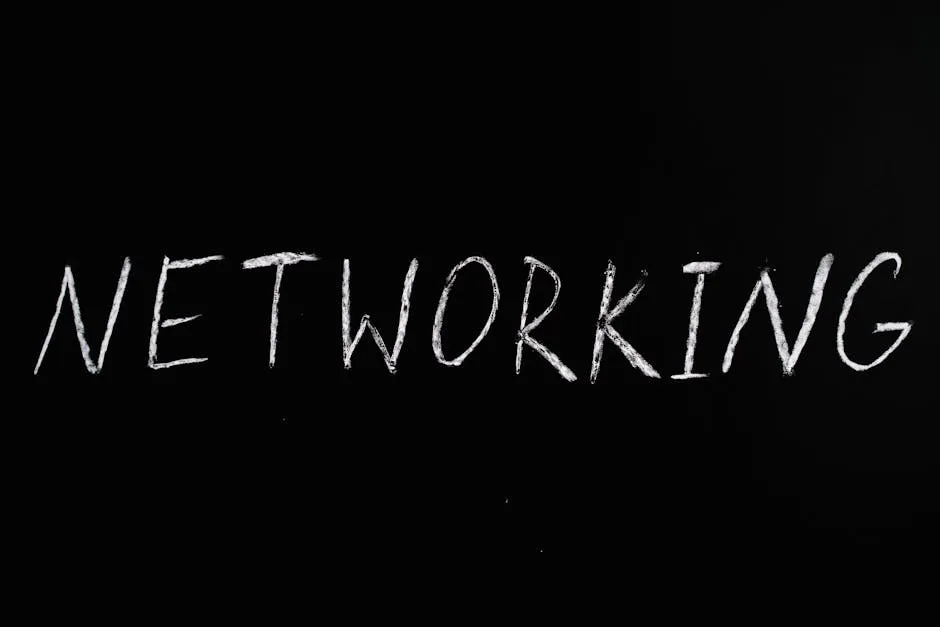
For those who enjoy a calming atmosphere while practicing these techniques, consider getting an Aromatherapy Essential Oil Diffuser. The soothing scents can create a tranquil environment, making it easier to manage those pesky blush moments.
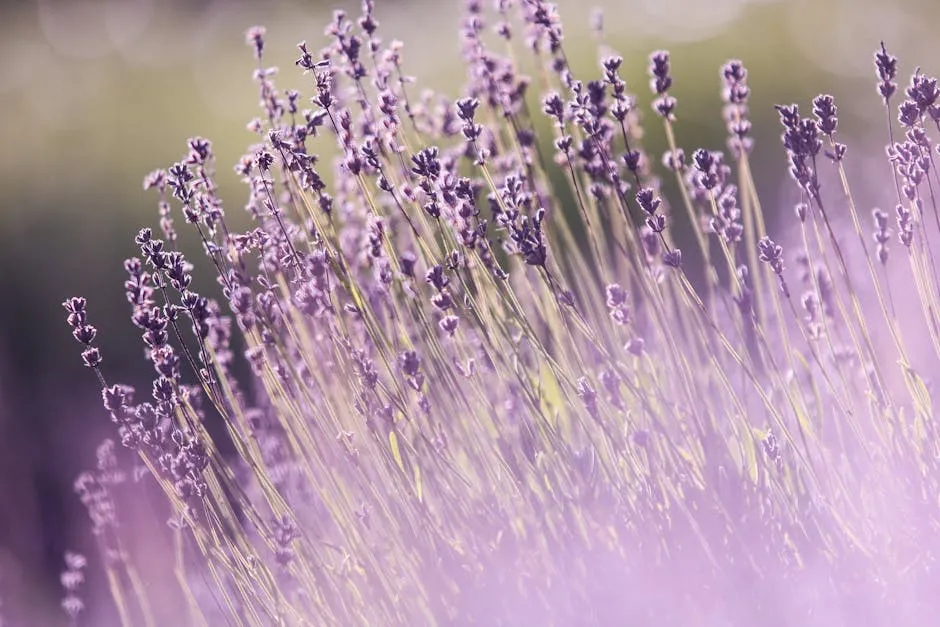
Long-term Solutions
For those who find blushing more than just a passing embarrassment, there are effective long-term solutions. Cognitive Behavioral Therapy (CBT) stands out as a popular option. This therapy helps individuals identify and challenge negative thought patterns related to embarrassment. By addressing underlying anxiety, CBT can significantly reduce the frequency and intensity of blushing episodes. It’s like having a psychological toolkit to manage those cheek-flushing moments.
In more severe cases where blushing disrupts daily life, medical treatments can provide relief. Beta-blockers, commonly used for heart conditions, can also help manage blushing. These medications work by blocking adrenaline’s effects, thus reducing blood vessel dilation in the face. For those seeking a more drastic solution, there’s endoscopic thoracic sympathectomy (ETS). This surgical procedure cuts the nerves that trigger facial blushing. However, it’s essential to weigh the potential risks, such as compensatory sweating or other side effects. Consulting with a healthcare professional can help determine the best approach tailored to one’s needs.

If you’re looking for a comfortable way to relax at home while exploring these options, a Weighted Blanket could be your new best friend. It provides a comforting hug that can help ease anxiety and promote relaxation.
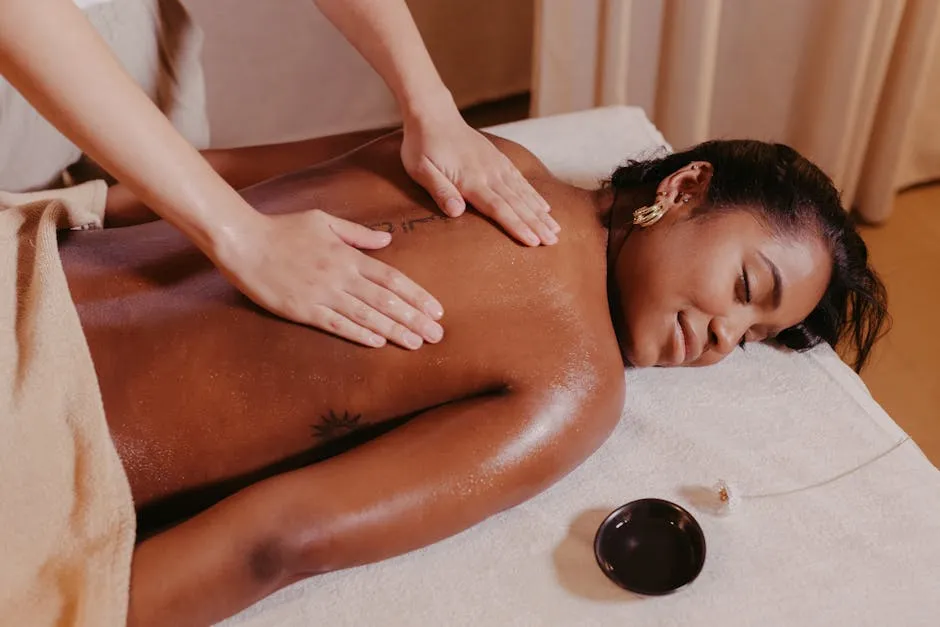
The Evolutionary Perspective on Blushing
Historical Insights
Blushing is a uniquely human experience, and historical theories provide intriguing insights into its evolutionary purpose. Charles Darwin, in his 1872 work, described blushing as “the most peculiar and most human of all expressions.” He noted that children only begin to blush around the age of three, indicating that emotional development plays a crucial role. This suggests that blushing is not just a physiological response but also a reflection of our social evolution.
Historically, blushing may have evolved as a mechanism of social communication. When someone blushes, it signals to others that they recognize a social misstep, reinforcing group cohesion. This involuntary response serves as a non-verbal apology, promoting forgiveness and understanding among peers. The idea is that blushing acts as a social cue, indicating sincerity and vulnerability, which can enhance relationships.
The notion that blushing fosters empathy is supported by research showing that people are more likely to forgive those who blush. This aligns with the idea that blushing evolved as a way to convey remorse, helping to maintain social harmony. In essence, blushing is more than a mere physiological reaction; it’s a vital component of our social fabric, illustrating how humans navigate complex social interactions.

Current Research
Modern research continues to explore the evolutionary significance of blushing. Recent studies suggest that the act of blushing may also play a role in reinforcing social norms. For example, when individuals blush in response to embarrassment, it demonstrates an awareness of social rules and a desire to adhere to them. This behavior can strengthen group dynamics, as observers are more likely to respond positively to someone who visibly acknowledges their errors.
Moreover, the connection between blushing and trustworthiness has garnered attention. People who blush are often perceived as more sincere and relatable, which can enhance their social standing. This perception may have evolved as a beneficial trait, allowing blushing individuals to foster closer bonds within their social groups.
In conclusion, the evolutionary perspective on blushing paints a fascinating picture of this physiological response. From historical insights by Darwin to modern research highlighting its social implications, blushing is a complex interplay of biology and psychology. It serves as a reminder of our shared humanity, revealing how our bodies communicate emotions that words sometimes cannot express.

Conclusion
Blushing is a delightful quirk of human nature, blending physiological and psychological elements. We’ve seen how blushing arises from adrenaline surges, causing blood vessels to widen and cheeks to redden. This involuntary reaction is not just a sign of embarrassment; it serves as a crucial social signal, expressing sincerity and vulnerability.
Throughout this article, we explored the triggers of blushing, from awkward moments to unexpected compliments. While many view blushing as a source of shame, it can also signify our capacity for empathy and connection. It’s a reminder that we’re all human, navigating the complexities of social interactions.
Embracing your blushing can lead to greater self-acceptance. Instead of viewing it as a flaw, consider it a beautiful part of your emotional landscape. So, the next time you feel that warm rush on your cheeks, remember: it’s just your body’s way of expressing a very human experience. Celebrate your blush; it’s a testament to your authenticity!
Additionally, if you’re interested in a practical way to document your feelings and experiences, consider using a Mindfulness Journal. It can help you reflect on those blush-inducing moments and track your emotional growth!

FAQs
What causes blushing?
Blushing occurs due to a combination of physiological and psychological factors. When feeling embarrassed or self-conscious, the body releases adrenaline. This hormone causes blood vessels in the face to dilate, leading to increased blood flow and the characteristic reddening of the cheeks. It’s often triggered by emotions such as shame, excitement, or anxiety.
Is blushing always a sign of embarrassment?
Not at all! While embarrassment is a common trigger, blushing can occur in various contexts. For instance, receiving a compliment can elicit a blush due to feelings of flattery or pride. Similarly, excitement or nervousness in social situations may also lead to a rosy complexion. Essentially, blushing reflects our emotional state, which can vary widely.
Can blushing be treated or managed?
Yes, there are several strategies to manage excessive blushing. Short-term techniques include deep breathing, mindfulness, and distraction methods. Long-term solutions might involve Cognitive Behavioral Therapy (CBT) to address underlying anxiety. In severe cases, medical treatments like beta-blockers or even surgical options like endoscopic thoracic sympathectomy (ETS) may be considered, but these should be discussed with a healthcare professional.
Why do some people blush more than others?
Individual differences in blushing sensitivity can be traced back to personality traits and experiences. People with social anxiety often blush more readily due to heightened self-awareness and fear of judgment. Additionally, cultural backgrounds may influence how people perceive and react to blushing, leading to variations in responses across different societies.
Are there any benefits to blushing?
Absolutely! Blushing can enhance perceived trustworthiness and likability in social situations. When someone blushes, it often signals sincerity and vulnerability, which can foster empathy and connection with others. In many cases, blushing can serve as a social lubricant, easing tensions and facilitating positive interactions. So, the next time you find yourself turning red, remember that it might be working in your favor!
Please let us know what you think about our content by leaving a comment down below!
Thank you for reading till here 🙂
All images from Pexels




